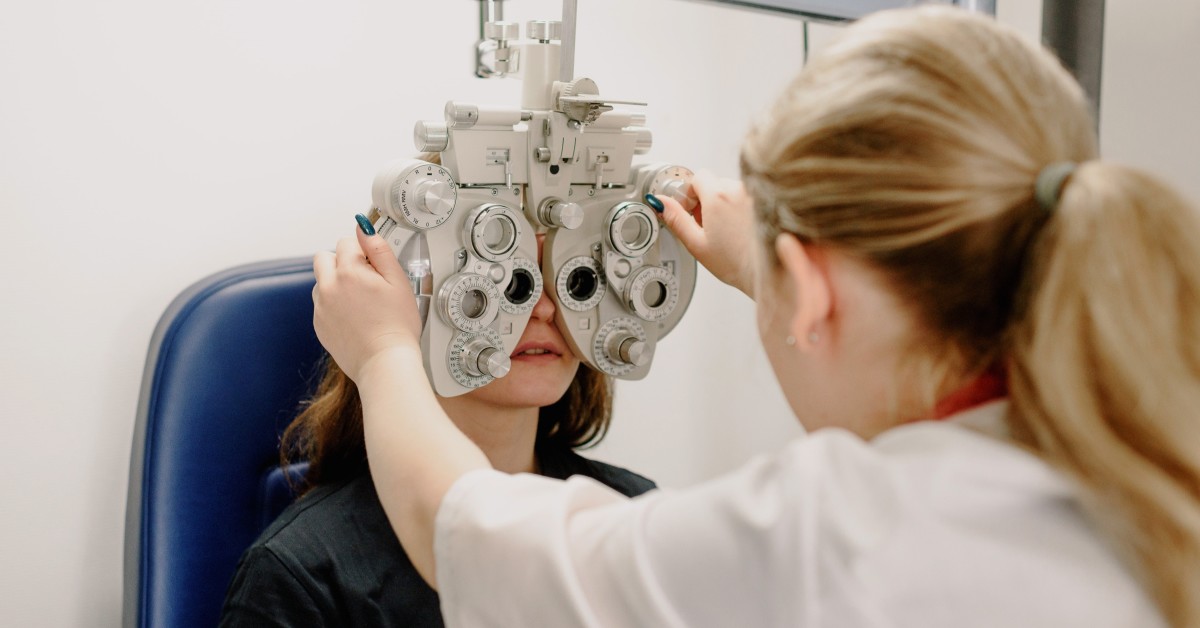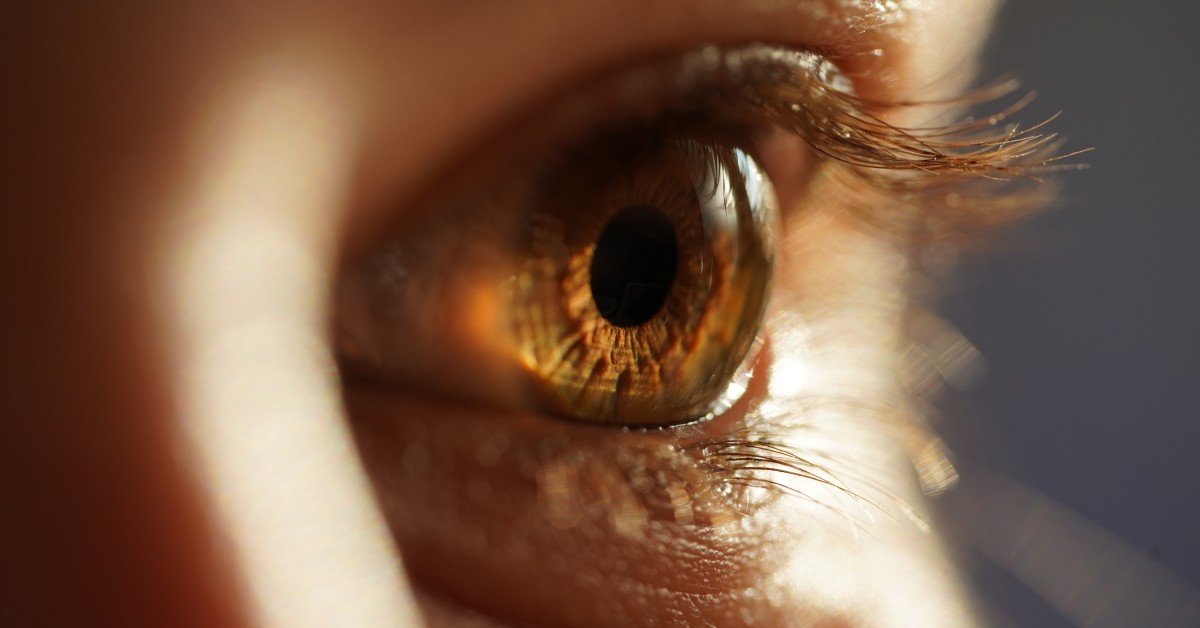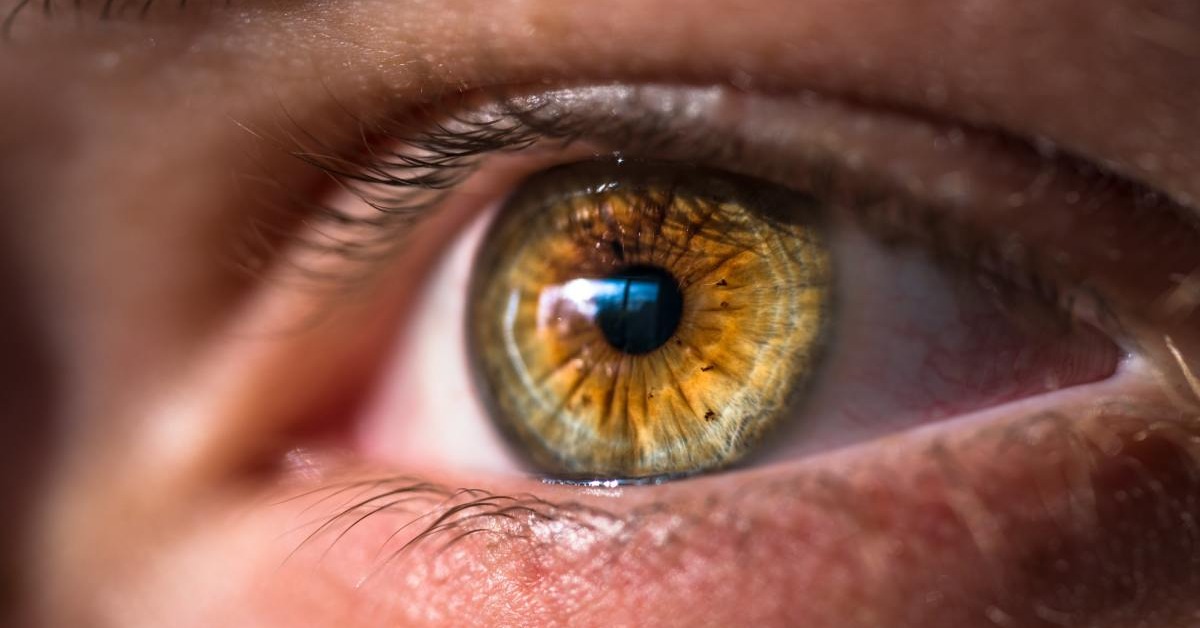
Why Become a Sports Vision Optometrist?
Sports vision optometrists work with patients at all levels, including [...]

Contact lenses are popular: about 45 million Americans wear them to remedy vision impairments. Not everyone can wear a conventional contact lens, however; people with keratoconus, presbyopia, corneal transplants, or an astigmatism are among those requiring specialty lenses. To get those lenses, they can visit a cornea and contact lens optometrist.
Cornea and contact lens optometrists are specially trained eye doctors who serve patients with various corneal irregularities and diseases. They also treat patients with more conventional vision impairments like myopia, and they fit specialty lenses designed specifically for athletes.
Specialization in cornea and contact lens optometry requires additional training completed after graduation from a Doctor of Optometry program. Because this field is constantly evolving and advancing, specialists must also undertake lifelong continuing education through lectures or workshops facilitated by optometry associations. Maintaining the required level of expertise is challenging, but it pays dividends in both higher compensation and a wider variety of patients and conditions to treat.
Thinking about becoming a cornea and contact lens optometrist? This article explores the following topics:
Contact lenses created a new level of freedom when New York optometrist William Feinbloom introduced them to glasses-wearers in 1936. For those with basic vision problems, they were a welcome alternative to heavy frames and sat nearly invisibly on the eye. The introduction of soft contact lenses in 1971 opened the product to millions who could not wear hard contact lenses.
Generalist optometrists can fit patients for mass-market contact lenses. However, contact lens fittings are a little more involved for people with more complex vision problems like corneal transplants and keratoconus or for patients who have had refractive surgery. A cornea and contact lens optometry specialist is trained and practiced in these unique situations. They can perform specialized eye exams and use specialized equipment to take precise measurements for an ocular prescription, including the cornea’s shape, size, curvature, and quality of tear production.
Advanced contact lens treatments are unique specializations best learned in a residency position. For recent grads, a one-year residency can provide clinical experience and training for fitting specialty contact lenses for keratoconus, orthokeratology contact lenses for myopia control, multifocal contact lenses, pediatric contact lenses, and lenses for post-surgical corneas and other corneal diseases.
Participating in grand rounds with other students, interns, physicians, and residents is another way to gain training and experience. In addition, organizations like the Gas Permeable Lens Institute have archived webinars to help with unique cases and reinforce new skill sets.
On-call physicians, ophthalmologists, and primary care physicians send referrals to cornea and contact lens optometrists for exceptional cases requiring contact lens care. For each patient, treatment begins with a thorough eye exam to monitor eye health and anterior segment disease or injury conditions. The cornea and contact lens optometrist then uses instruments like a keratometer or a corneal topographer to map the base curve of a patient’s cornea. They also measure pupil and iris size and evaluate tear production to ensure a patient doesn’t have dry eye or other conditions that may make contact lens use difficult.
Contact lens optometrists also check for optometric conditions like presbyopia, irregular astigmatism, and refractive error conditions like myopia (nearsightedness) and hyperopia (farsightedness). Additionally, they treat patients recovering from corneal surgery, LASIK refractive surgery, or ocular diseases like myopic macular degeneration, cataracts, or glaucoma.
Patients may require custom-made, specialty contacts like scleral lenses to treat irregular corneas. Practitioners must determine whether a patient needs rigid, hybrid, or soft contact lenses, corneal reshaping, or an abnormal lens design.
Beyond diagnostics and treatment, cornea and contact lens optometrists educate patients on their eye health and how to care for their lenses properly. Practitioners also schedule follow-up exams for complicated cases and monitor their patients’ eye health for changes.
Many cornea and contact lens optometrists become interested in the specialty when participating in externships and rotations as OD students. These specialists are often interested in providing direct patient care for unique and challenging cases similar to those they’ve encountered during optometry studies.
Cornea and contact lens optometrists treat patients recovering from anterior segment cornea surgery or corneal eye care. It’s a unique discipline requiring sustained relationships with patients to follow progress, making it ideal for optometrists looking for challenging and rewarding cases. Practitioners enjoy a favorable work-life balance. Optometry typically provides defined work hours and the ability to create personal time without interruption.
Finding your specialization begins in optometry school, where students can work one-on-one with patients in all practice areas. Pediatric or geriatric care may appeal to some students. Others may be interested in the immediacy of emergency care, while some enjoy the challenge of exceptional cases needing precise, long-term attention.
Admission to optometry school requires previous coursework in biology, chemistry, statistics, and calculus, all of which prepare students for the entrance exam required for OD applicants—the Optometry Admissions Test (OAT). The OAT measures preparedness for all Doctor of Optometry programs. With passing results and 20 or more hours shadowing a practicing optometrist, students can apply to optometry programs.
Training begins in a college of optometry with lectures and lab work before moving on to a residency program. Students establish connections with other practitioners, equipment designers, and manufacturers in these settings. Residency programs provide opportunities for OD graduates to work on scientific presentations, present lectures in front of an audience, consult with optometry students, and obtain service experience.
Unlike ophthalmology, which requires attending medical school, optometry typically requires the successful completion of four years of study at a college of optometry in addition to a bachelor’s degree.
Every college of optometry sets its own requirements. New England College of Optometry (NECO), which offers a cornea and contact lens concentration, requires prospective NECO students to obtain a grade higher than a C in prerequisite courses for admission. Prerequisites include physics, biology, chemistry, organic chemistry, statistics, calculus, psychology, and English.
Doctor of Optometry programs are science-heavy. Ocular anatomy, cell biology, physiology, neuroanatomy, biochemistry, genetics, pharmacology, and clinical medicine occupy the bulk of students’ time. Programs reinforce this classwork with clinical rotations in primary, advanced, and specialty care.
Each state sets its own licensure requirements, including the number of clinical hours required. Each state’s regulatory board grants licenses. Any application fees or processes are specific to each state’s policies.
Optometry is a highly paid discipline. Specialization, certification, and experience can all increase potential pay. The Bureau of Labor Statistics (BLS) lists the average annual salary for an optometrist as $124,300, but depending on the state you work in and special qualifications you hold, that number can reach much higher. Salary.com lists the highest ten percent of optometrists earning $162,402 per year.
Currently 23 accredited optometry schools serve the U.S. and Puerto Rico. With accessibility in mind, the New England College of Optometry (NECO) will launch a hybrid OD program in the fall of 2023. This first-of-its-kind program will enroll its first class of 25 students, adding ten students per year as it expands to those outside the reach of on-campus programs.
Top optometry schools in the U.S. include New England College of Optometry, Arizona College of Optometry at Midwestern University, Ohio State University College of Optometry, Illinois College of Optometry, and SUNY College of Optometry.
Questions or feedback? Email editor@noodle.com

Sports vision optometrists work with patients at all levels, including [...]

Optometrists conduct eye exams that detect not only myopia, glaucoma, [...]

Ocular disease optometrists specialize in the early detection, diagnosis, and [...]

The majority of our population will experience some level of [...]

Earning a Doctor of Optometry (OD) and becoming a licensed [...]
Categorized as: Optometry, Nursing & Healthcare